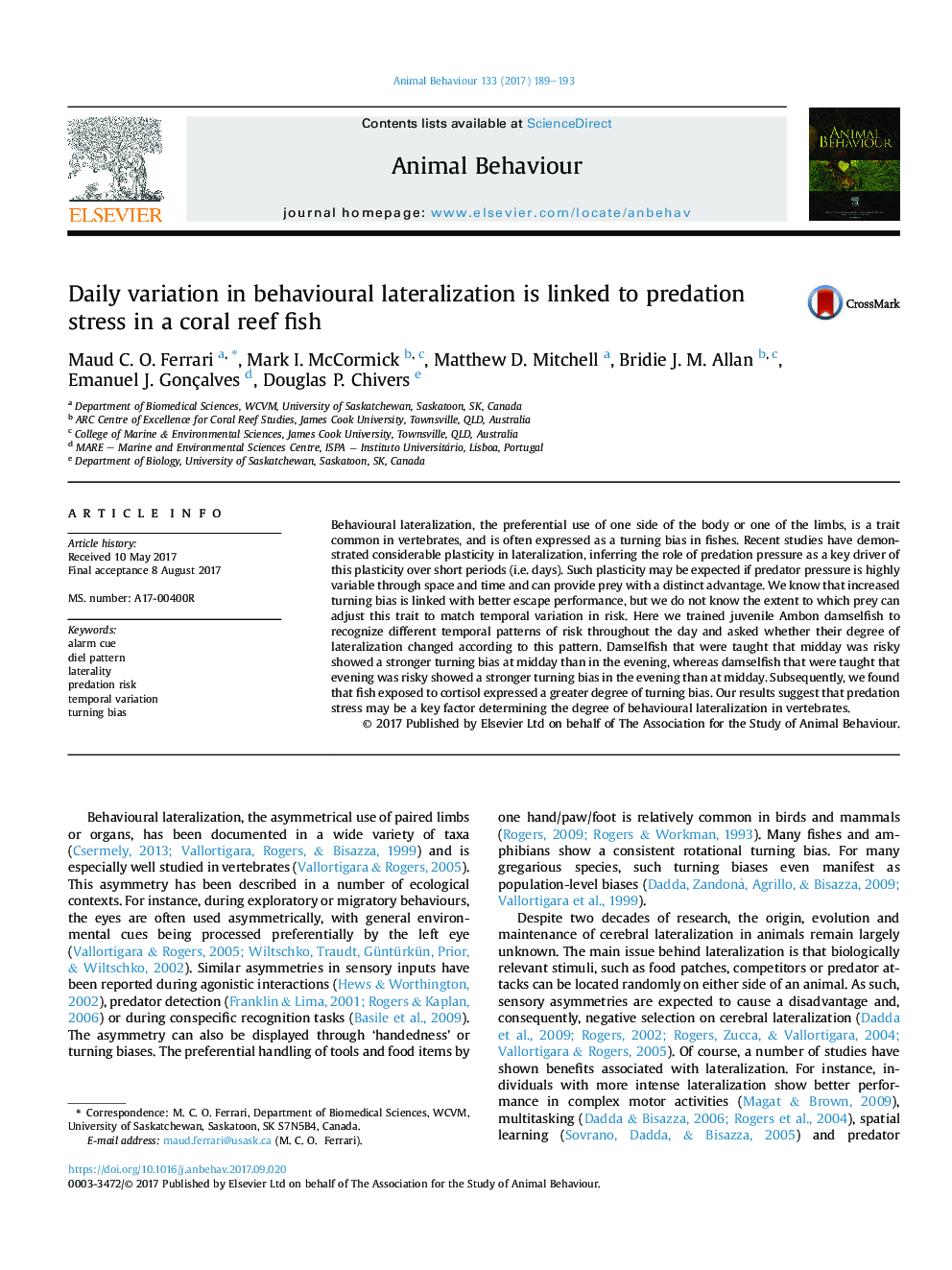| Article ID | Journal | Published Year | Pages | File Type |
|---|---|---|---|---|
| 5538324 | Animal Behaviour | 2017 | 5 Pages |
Abstract
Behavioural lateralization, the preferential use of one side of the body or one of the limbs, is a trait common in vertebrates, and is often expressed as a turning bias in fishes. Recent studies have demonstrated considerable plasticity in lateralization, inferring the role of predation pressure as a key driver of this plasticity over short periods (i.e. days). Such plasticity may be expected if predator pressure is highly variable through space and time and can provide prey with a distinct advantage. We know that increased turning bias is linked with better escape performance, but we do not know the extent to which prey can adjust this trait to match temporal variation in risk. Here we trained juvenile Ambon damselfish to recognize different temporal patterns of risk throughout the day and asked whether their degree of lateralization changed according to this pattern. Damselfish that were taught that midday was risky showed a stronger turning bias at midday than in the evening, whereas damselfish that were taught that evening was risky showed a stronger turning bias in the evening than at midday. Subsequently, we found that fish exposed to cortisol expressed a greater degree of turning bias. Our results suggest that predation stress may be a key factor determining the degree of behavioural lateralization in vertebrates.
Related Topics
Life Sciences
Agricultural and Biological Sciences
Animal Science and Zoology
Authors
Maud C.O. Ferrari, Mark I. McCormick, Matthew D. Mitchell, Bridie J.M. Allan, Emanuel J. Gonçalves, Douglas P. Chivers,
